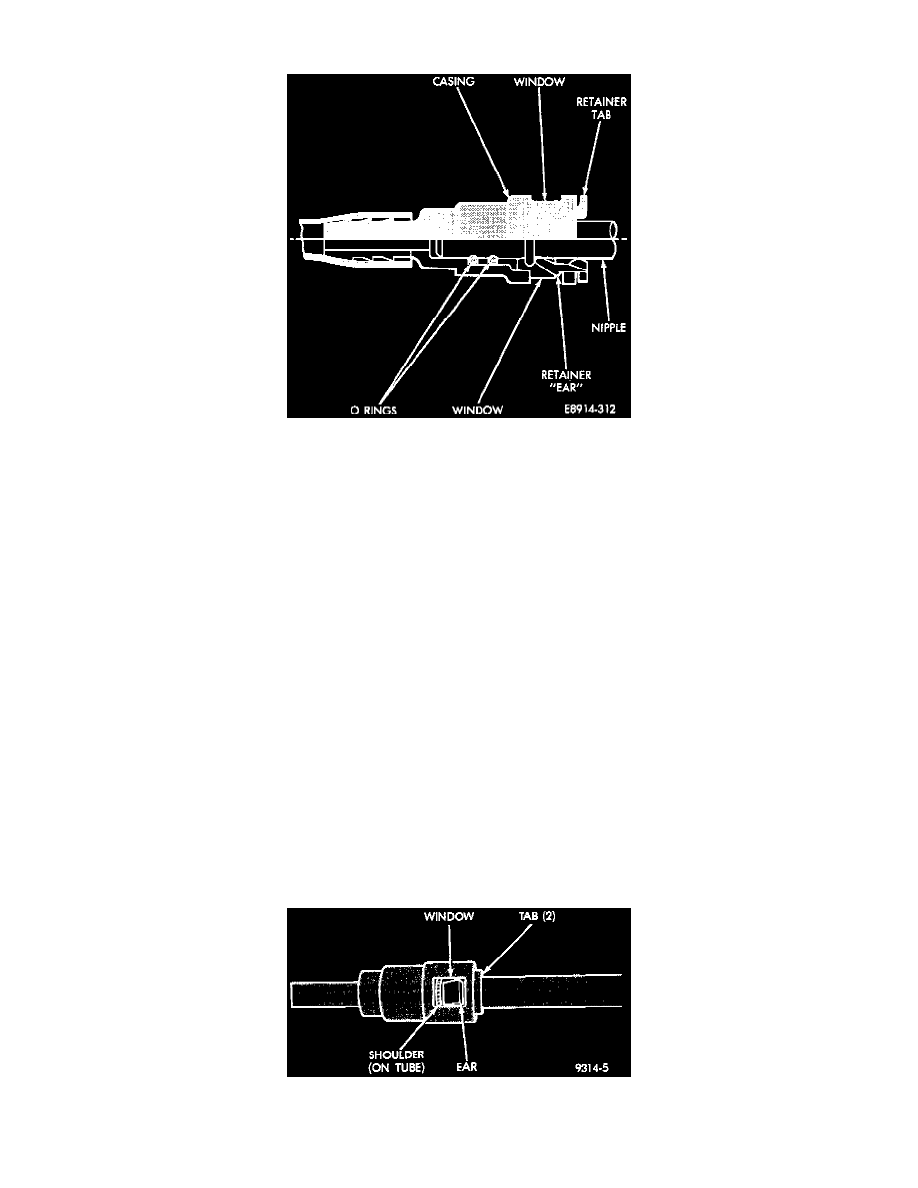Sebring Convertible V6-2.5L SOHC 24 Valve (1996)

Fuel Line Coupler: Service and Repair
Fig. 5 Plastic Quick-Connect Fittings
FUEL LINES AND QUICK CONNECT FITTINGS
Fuel Lines
Fuel line clamps are not used on any fuel system component. If there is a fitting or line that needs repair it must be replaced. DO NOT use rubber
hose and clamps to repair a fuel line.
Inspect all lines and quick connect fittings for leaks. Replace lines that rub against other vehicle components or show sign of wear. Ensure all lines
are secured in their proper holders.
Quick - Connect Fittings
Fuel tubes connect fuel system components with plastic quick-connect fuel fittings. The fitting contains non-serviceable 0-ring seals Fig. 5.
CAUTION: Quick-connect fittings are not serviced separately. Do not attempt to repair damaged quick-connect fittings or fuel tubes. Replace the
complete fuel tube/quick-connect fitting assembly.
The quick-connect fitting consists of the 0-rings, retainer and casing Fig. 5. When the fuel tube enters the fitting, the retainer locks the shoulder of
the nipple in place and the 0-rings seal the tube.
REMOVAL
When disconnecting a quick-connect fitting, the retainer will remain on the fuel tube nipple.
WARNING: Release fuel system pressure before disconnecting quick-connect fittings. Refer to the fuel pressure release procedure.
1. Disconnect negative cable from auxiliary jumper terminal.
2. Perform Fuel Pressure Release Procedure. Refer to Fuel Pressure Release Procedure.
3. Squeeze retainer tabs together and pull fuel tube/quick-connect fitting assembly off of fuel tube nipple. The retainer will remain on fuel tube.
Fig. 6 Plastic Quick-Connect Fitting/Fuel Tube Connection
INSTALLATION
